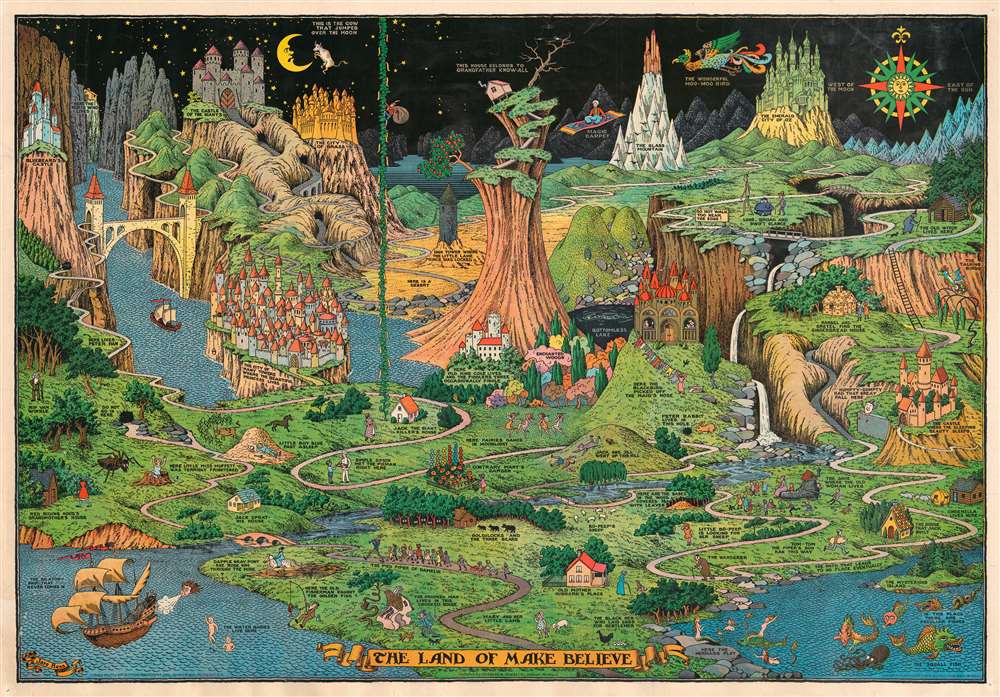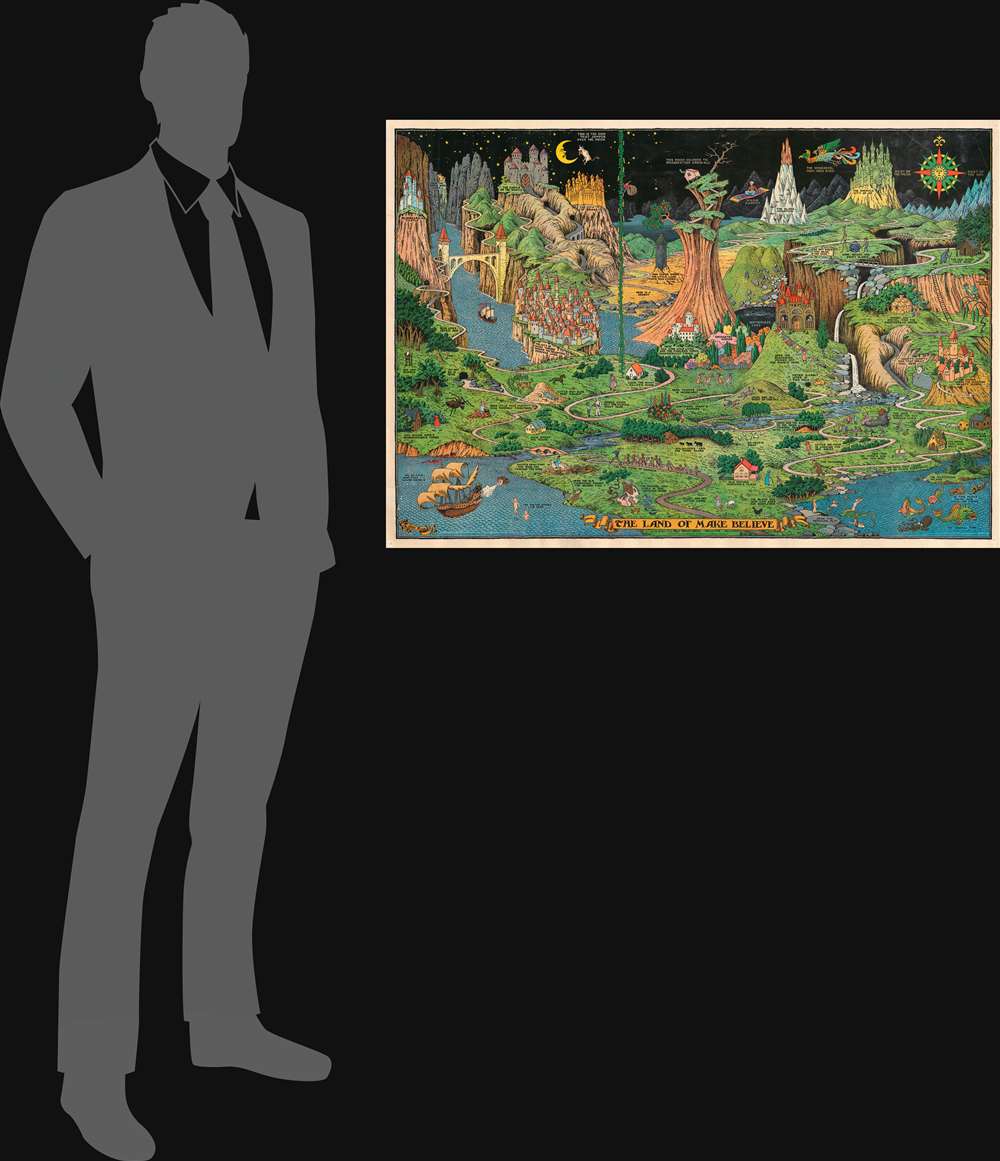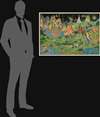This item has been sold, but you can get on the Waitlist to be notified if another example becomes available.
1958 Jaro Hess Map of the Land of Make Believe
MakeBelieve-hess-1958
Title
1958 (dated) 25.5 x 36.5 in (64.77 x 92.71 cm)
Description
The Wandering Jew
This first edition of this map featured an old, hunched man with a long beard, cane, and yarmulke - a figure labeled as 'The Wandering Jew'. The Wandering Jew is a mythical immortal whose legend appeared 13th century Europe. In the original legend, he was a Jew who taunted Jesus on the way to Crucifixion and consequently cursed to walk the Earth until the Second Coming. The exact nature of the Wanderer's indiscretion varies in different versions of the tale, as do aspects of his character; sometimes he is said to be a shoemaker or other tradesman, while sometimes he is the doorman at the estate of Pontius Pilate. In most literature he is held as something of a mysterious esoteric and holder of ancient secrets, sometimes mischievous, sometimes repentant, but in no way maleficent. In later editions of the map, as here, the name has been changed to the more politically correct 'Wanderer'.Publication History and Census
This map was initially copyrighted and published by Jaro Hess in 1930. The first edition is dated under Hess's signature in the lower left and bears the 'Jaro Hess' imprint at bottom center. The Land of Make Believe was then licensed to The Child's Wonderland Company of Grand Rapids, Michigan, who also issued an 1930 edition with their own imprint (2nd edition). In 1958 Hess modified the map, changing 'The Wandering Jew' to simply 'The Wanderer' (although the image remains clearly a Jew), renewing the copyright. At this time the copyright was picked up by Charles R. Sligh, the furniture magnate, whose imprint appears on this 1958 third edition. This edition was printed by Dickinson Brothers, Inc, a lithography firm in Grand Rapids, Michigan. From about 1982, the Hagstrom Map Company acquired rights to the image, which they license to Rosen-Ducat.This map appears on the market from time to time, usually in the present 1858 edition, (the 1930 Jaro Hess Imprint first edition is extremely rare) but rarely in acceptable condition. This map was popular long after its release and its typical placement, in children's playrooms, led to a very low survival rate. In addition, most examples are varnished and glued to boards. Initially intended to protect the map, the varnish naturally degrades overtime causing considerable damage. The present example is clean and unvarnished - making it a particularly desirable example.
Cartographer
Jaro Hess (March 22, 1889 - 1977), was a Czech painter and landscape designer. Hess was born in Prague, where he was named Jaroslav Hes. He immigrated to the United States in 1910, at the age of 21. Before immigrating, Hess received a degree in metallurgical engineering from the University of Prague, and soon thereafter joined the French Foreign Legion in Algiers. He quickly realized that this had been a poor decision and later remembered the experience as some of the ‘worst days of his life.’ After returning to Europe as a stowaway, he completed his military service in the Austrian army. After immigrating to America, Hess tried his luck in the Pittsburgh steel mills. He greatly disliked the ‘dirty city’ and left, embarking on a more circuitous and nomadic life, working as a chemist, engraver, horticulturist, and steelworker throughout the Midwest. Hess eventually ended up in Grand Rapids, Michigan, where he took over his father-in-law’s plant nursery. Over the course of the 1930s and 40s, Hess made a name for himself as an artist in the Grand Rapids artistic community, and drew his most famous work, The Land of Make Believe. Hess became known for his sketches of odd creatures and other supernatural themes. More by this mapmaker...




